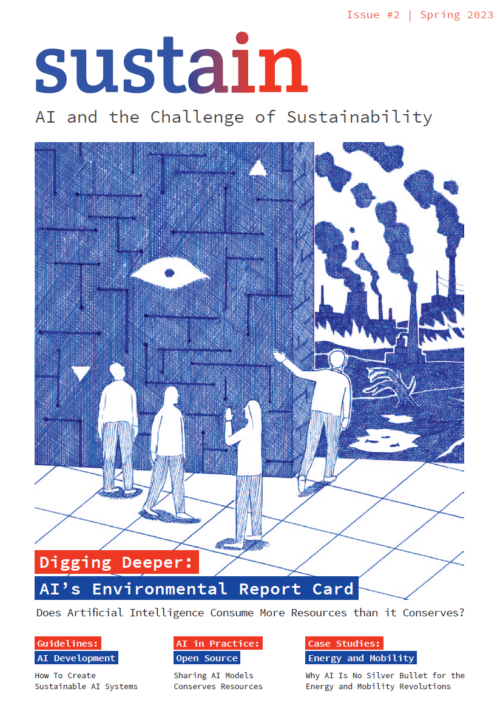The AI Mobility Revolution in the Countryside: Optimism versus Reality
Frieder Schmelzle from the Institute for Ecological Economy Research (IÖW) gives an overview of the current mobility and digital strategies of the German state governments on the issue of public transport connections in rural regions. Great expectations lie on the automation of local transport. However, this overshadows more fundamental questions about sustainable mobility in rural areas.

The Association of German Transport Companies is predicting that the introduction of the first autonomous public transport services in 2025 will be the start of a “robo-shuttle revolution.” Politicians have likewise shown increasing support for automating rural mobility with the help of AI. Yet it is by no means certain that doing so will result in decreased usage of private automobiles, which are particularly damaging to the climate. Analyses of the mobility and digital strategies developed by German state governments show that political targets with regards to sustainable transportation are either imprecise or nonexistent.
AI systems for autonomous public transportation are widely considered to be a driver of the economy. In the mobility strategy for the German state of Hesse, a mobility company executive forecasts that the costs of public transportation will drop thanks to AI. The Economy Ministry for the state of Lower Saxony even claims to have reached “concrete agreements” with the automobile industry on digitalization. One of the aims of the new business models being developed for public transportation is that of improving rural connections. The hope is that by eliminating the cost of drivers, route frequency will improve, which would increase flexibility for people who do not possess their own cars. Whether the new offerings will be affordable is largely dependent on the net savings produced through driverless operations. The level of those savings, however, cannot yet be assessed on the basis of the analysis of current projects, in which autonomous minibuses are being tested in rural areas. Indeed, efforts are primarily focused on “getting it to work at all somehow [...] and you’re happy if you find any solution that’s technically feasible,” according to an interviewee who researches and applies AI solutions in the processing of sensor data.
The SustAIn analyses show that far too little attention is paid to environmental issues – both by politicians and in the development of the technology. One test project employee with manyyears of experience in the transport sector says: “I don’t thinkwe will experience a completely automated public transportsystem in my lifetime.” So far, there are only a few examples ofautonomous minibuses ferrying passengers between touristattractions, university buildings and clinics. As a rule, they travelbetween 15 and 18 km/h, and have a safety driver on board
Currently, there is little to indicate that autonomous minibuses will provide a sustainable solution to the deep structural problems facing rural mobility. Political expectations are high but there is a lack of sound evidence. Relying on rail or large buses remains – with almost no exceptions – more climate friendly than the use of smaller vehicles, even if they are electric. Instead of focusing on the question of how we can replace people who drive public transport vehicles, politicians and those working in research and development should be searching for answers to the more fundamental question as to how we can make the shift to sustainable transport.
Frieder Schmelzle is a Researcher at the Institute for cological Economy Research. His focus is on the social and technological conditions necessary for a sustainable transformation in addition to governance in the areas of digital technologies and energy systems.
The case study was published in the second issue of the SustAIn magazine. For more articles and facts about AI and sustainability, download the whole magazine as PDF here.
Illustration: Kevin Lucbert for SustAIn Magazine #2, CC BY 3.0 DE
